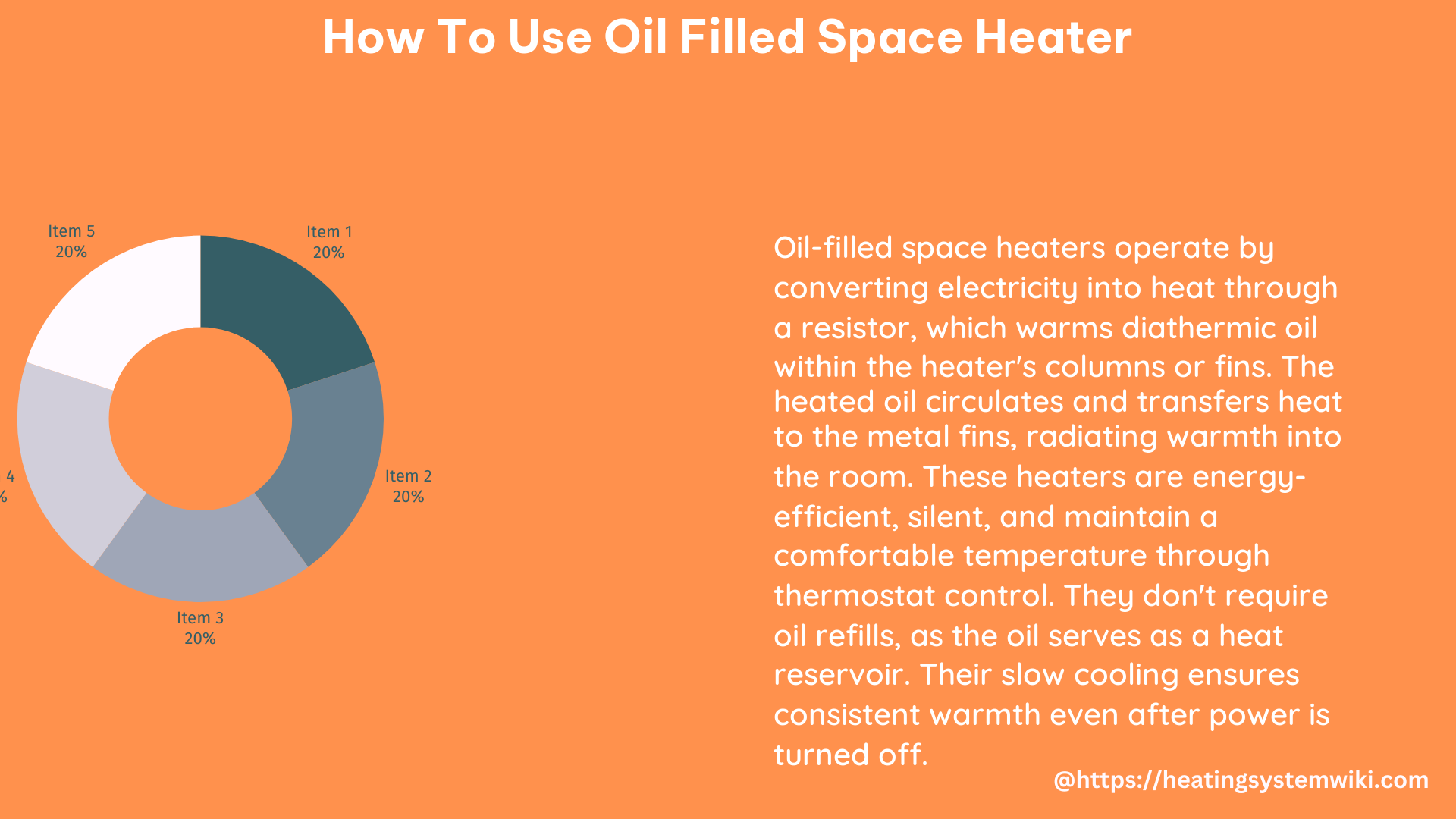Oil-filled space heaters are a popular choice for supplemental heating due to their efficient and safe operation. These heaters utilize diathermic oil, a specialized fluid with a high specific heat capacity, to absorb and distribute heat effectively. By understanding the components and operating principles of an oil-filled space heater, users can maximize its performance and ensure safe operation.
Understanding the Heating Process
The heating process in an oil-filled space heater involves the conversion of electrical energy into thermal energy. An internal resistor within the heater converts the incoming electricity into heat, which is then absorbed by the diathermic oil. As the oil warms, it circulates through the heater’s fins, transferring the heat to the metal surfaces and radiating it into the surrounding environment through natural convection.
The diathermic oil used in these heaters has a high specific heat capacity, meaning it can absorb and store large amounts of heat without experiencing significant temperature increases. This allows the heater to maintain a consistent and stable heat output, even during periods of high demand.
Setting Up and Using an Oil Filled Space Heater

When setting up and using an oil-filled space heater, consider the following steps:
-
Placement: Position the heater on a stable, level surface away from foot traffic and combustible materials. Ensure a minimum clearance of 3 feet (0.9 m) from any walls or furniture to allow for proper air circulation.
-
Electrical Connection: Plug the heater into a properly grounded electrical outlet. Avoid using extension cords or power strips, as they may not be able to handle the heater’s power requirements.
-
Temperature Control: Set the desired temperature using the thermostat control. Oil-filled space heaters typically have a range of 40°F (4°C) to 90°F (32°C), with increments of 1°F (0.5°C) or 2°F (1°C) for precise temperature adjustment.
-
Heat Setting Selection: Choose an appropriate heat setting based on the size and insulation of the room. Lower settings, such as 600-800 watts, are generally more energy-efficient for smaller spaces or shorter heating periods. Higher settings, up to 1500 watts, may be necessary for larger rooms or longer heating durations.
-
Monitoring: Periodically check the heater to ensure it is functioning properly and safely. Monitor the temperature output and adjust the settings as needed to maintain a comfortable environment while minimizing energy consumption.
Technical Specifications and Features
When selecting an oil-filled space heater, consider the following technical specifications and features:
-
Wattage: The maximum electrical power output, typically ranging from 600 watts to 1500 watts. Higher wattage does not necessarily equate to greater heating capacity, as other factors, such as room size and insulation, also play a role.
-
Dimensions and Weight: The physical size and weight of the heater, which can impact its portability and suitability for different spaces. Compact and lightweight models are often preferred for easy relocation.
-
Number of Heat Settings: The available heat output levels, which can range from 1 to 3 or more. More heat settings allow for greater energy efficiency and heating control.
-
Thermostat Type: The type of thermostat, either manual or digital, can affect the precision and convenience of temperature control.
-
Safety Features: Look for additional safety features, such as tip-over protection, overheat protection, and cool-touch exterior surfaces, to enhance the heater’s safety and user experience.
Maintenance and Troubleshooting
To ensure the optimal performance and longevity of your oil-filled space heater, consider the following maintenance and troubleshooting tips:
-
Regular Cleaning: Dust and debris can accumulate on the heater’s exterior and fins, reducing its efficiency and potentially creating a fire hazard. Use a soft, dry cloth to gently wipe down the heater, being careful not to damage any delicate components.
-
Performance Monitoring: Regularly check the heater’s temperature output and energy consumption to ensure it is operating efficiently and safely. Adjust the heat setting and thermostat as needed to maintain a comfortable temperature while minimizing energy waste.
-
Inspection for Damage: Periodically inspect the heater for any signs of wear, such as frayed cords, damaged fins, or malfunctioning controls. If any issues are detected, discontinue use and consult the manufacturer’s instructions or a professional for repair or replacement.
By following these guidelines and understanding the technical specifications of your oil-filled space heater, you can ensure safe and efficient operation, maximizing the comfort and energy savings it provides.
